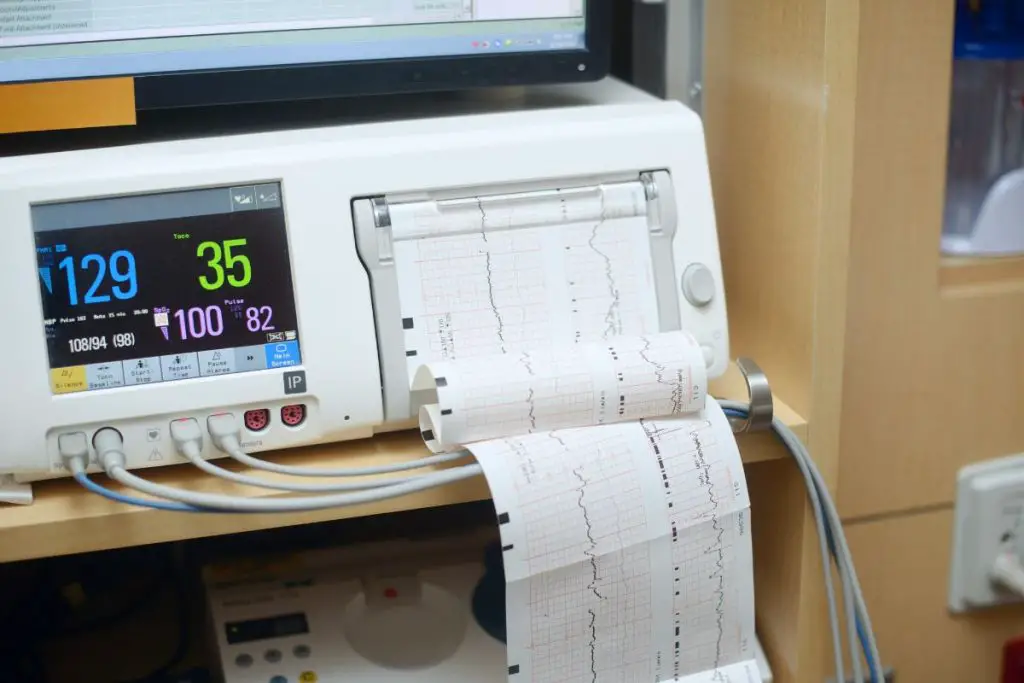Labor is an exciting, rewarding experience for expectant parents. It’s the grand finale for nine months of hard work. Without a doubt, the mother will experience pain and stress during labor, and in most cases, the baby tolerates labor quite well.
With every delivery, however, there’s an element of risk that cannot be ignored. This chance of risk is why all babies should be monitored while the mother is in labor.
What Do Fetal Monitors Do?
An electronic fetal monitor measures the response of the baby’s heartbeat to the contractions of the uterus. There are several different types of monitors. They all monitor the same signals and will give a reading of this relationship (the effect of labor contractions on your baby’s heartbeat).
The labor and delivery nurse or a technician may be able to pick up on signs of fetal stress and distress through the variations found in the readings. Some monitors are equipped to sound an alarm if such a variation occurs.

Are Fetal Monitors Safe?
Yes! Fetal heart Dopplers are completely safe when used by trained health professionals.
What are the Different Types of Fetal Monitors?
There are two types of fetal monitoring, external or internal monitoring. External monitoring is the most common. Internal monitoring is used when more accurate readings are required. If and when suspicion of fetal distress shows up in external monitoring, internal monitoring would be used
There are four main types of monitoring equipment:

- The Doppler is a handheld ultrasound device that will transmit the baby’s heart rate into speakers or earplugs. Often doctors or midwives will use this instrument in their office. The beauty of using a Doppler during labor is that it can be used intermittently with very little hassle for hospital staff or the laboring mother.
The mother also can maintain mobility with the Doppler if it helps to manage pain or is helping labor to progress since it’s portable. - The external electronic fetal monitor is a two-belt ultrasound device that is strapped around the mother’s belly. This method provides a beat-to-beat view of the baby’s heart tones in relation to the mother’s contractions.
This device can be used continually or intermittently. This method does use ultrasound, and there can be a margin of mechanical error. These errors may occur because the device is getting jarred during a mother’s movements or the sensor loses contact with the body. There is a loss of mobility (when in use), which may slow labor. - The internal fetal monitor is more accurate than the external monitor as it does not rely on ultrasound. It can provide continuous monitoring for a high-risk mother. In order to use this type of monitoring the mother’s water must be broken and she must be dilated between 2-3 centimeters. This monitor relies on an electrode being placed just below the skin on the scalp of the baby during labor.
When a baby is born that has received internal monitoring there is usually a small cut on the scalp where the electrode was placed. This is commonly referred to as a “stork bite.” It heals with little effort in a few days. It’s a very small price to pay for the added benefit of knowing exactly how your little one was fairing during a long or particularly hard labor. - Telemetry monitoring is the newest type of monitoring available. This device uses radio waves from a transmitter on the mother’s thigh to transmit the baby’s heartbeats to the nurses’ station. Mothers can maintain mobility and have the benefit of constant monitoring.
This technology may not be available at all hospitals. If this sounds like the type of monitoring that you would prefer, make sure to check to see if it’s available at your hospital before delivery.
Conclusion: Understand Monitor Use and Speak with Your Health Care Provider
The type of fetal monitoring you receive will depend greatly on your choice of labor management. If you are high risk, are induced or choose an epidural you will likely need continuous monitoring.
Study the different types of monitoring and talk with your OB/GYN or midwife. Be aware of what’s going on with the standards of monitoring in the medical community in your area.

